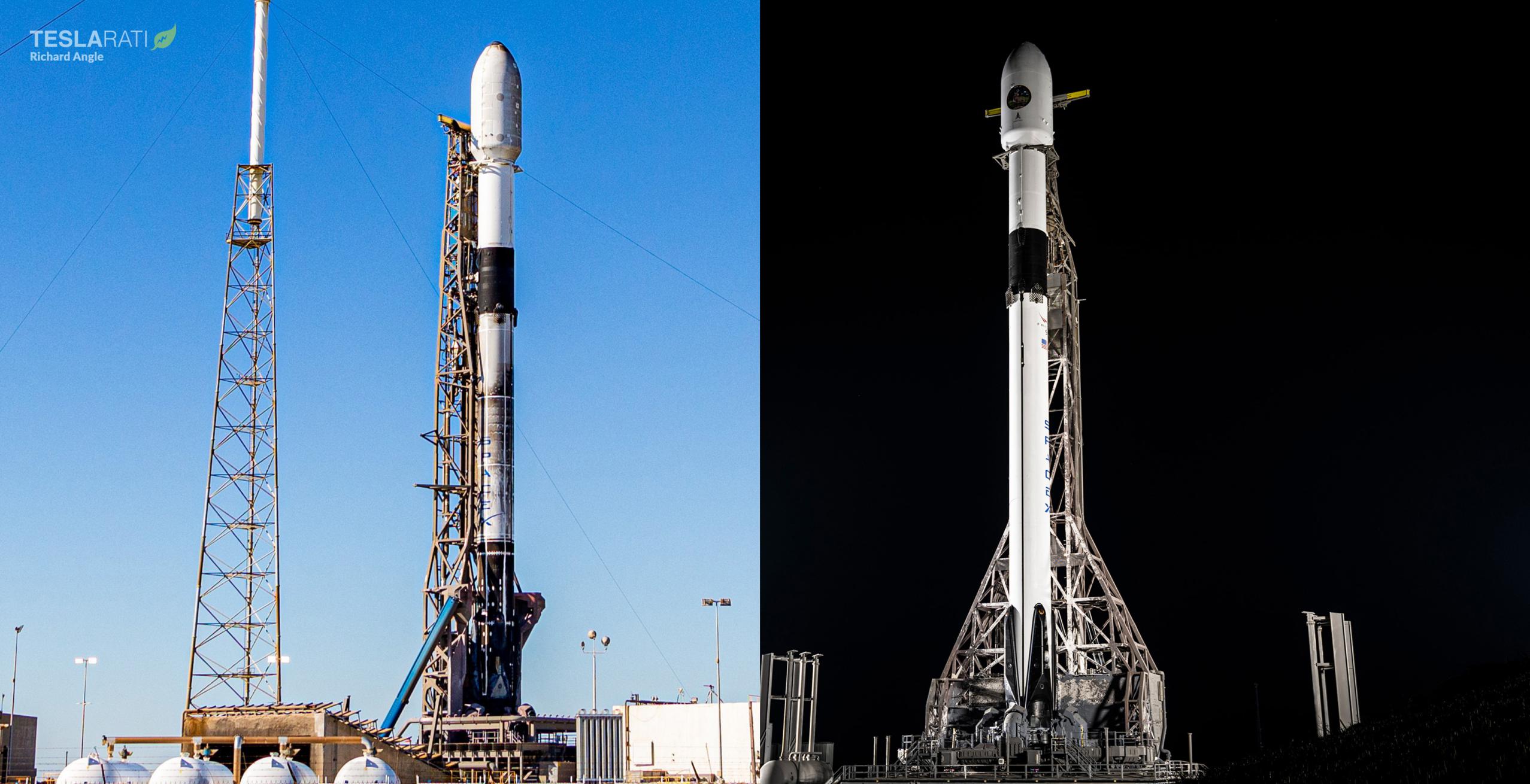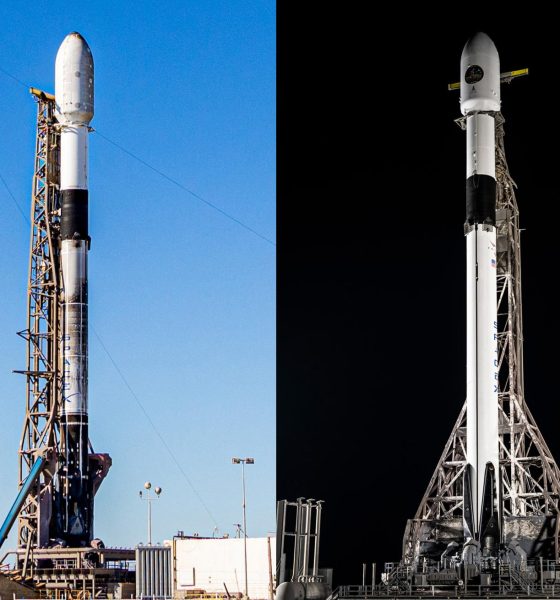

News
SpaceX to close out February with Starlink launches on Monday and Friday [updated]
Update: SpaceX has delayed Starlink 4-8 from February 20th to no earlier than (NET) 9:44 am EST (14:44 UTC), Monday, February 21st in the hopes of better “recovery weather.” The mission will be Falcon 9 booster B1058’s 11th launch overall and second launch in less than 40 days.
Up next, Starlink 4-11 – SpaceX’s second West Coast launch this year – is now firmly scheduled to lift off around 7:30-8 am PST (15:30-16:00 UTC) on Friday, February 25th from Vandenberg Space Force Base (VSFB). Finally, launch photographer Ben Cooper reports that a third Starlink mission – likely Starlink 4-9 – is scheduled to launch from Kennedy Space Center Pad 39A as soon as March 3rd. SpaceX has at least one more Starlink mission and a private astronaut launch tentatively scheduled for March.
Continuing the company’s busiest planned year yet, SpaceX has dispatched a drone ship for the first of two more Falcon 9 Starlink launches scheduled before the end of the month.
While there were signs a few weeks ago that SpaceX had as many as four Starlink launches planned this month, that appears to have shrunk to three. In theory, SpaceX could have finished refurbishing both of its East Coast launch pads – LC-40 and LC-39A – earlier this week after supporting launches on January 31st and February 3rd. SpaceX may be taking an extra week to better understand a space weather anomaly that recently destroyed more than three-dozen Starlink satellites, to conduct deeper pad maintenance, to refurbish well-worn Falcon rockets, or to simply give its launch workforce a bit of respite but either way, the company’s next Falcon 9 launch appears to be scheduled no earlier than (NET) 9:54 am EST (14:54 UTC), Sunday, February 20th.
Drone ship A Shortfall Of Gravitas (ASOG) departed Port Canaveral on February 16th and is headed about 636 kilometers (395 mi) downrange to support Starlink 4-8’s Falcon 9 booster landing. The mission will be the new drone ship’s fourth consecutive recovery – an unintentional situation that was forced upon it when drone ship Just Read The Instructions (JRTI) suffered damage during SpaceX’s last booster recovery of 2021. On top of almost sliding off the deck, Falcon 9 booster B1069 suffered significant damage to most or all of its nine Merlin 1D engines when JRTI’s ‘Octagrabber’ robot effectively dropped the booster on its head during recovery operations.
Only through the heroics of the human recovery crew was B1069 able to be secured to drone ship JRTI’s deck and returned to dry land in (more or less) one piece. Based on new aerial images from local photographer Julia Bergeron, it appears that JRTI did require deck repairs after the ordeal. Equally importantly, the ship’s Octagrabber robot – which took the brunt of B1069’s fall – appears to have been fully repaired and was being tested on deck as of February 15th. Oddly, though drone ship ASOG has done an excellent job filling in, SpaceX has yet to have a fully nominal booster recovery since B1069’s anomaly.
With any luck, that will end later this month and the company’s three Octagrabbers will restart routine recovery operations. Following Starlink 4-8’s launch from Cape Canaveral, SpaceX has plans for at least one more Starlink mission – this time from the West Coast. SpaceX last launched from its Vandenberg SLC-4E pad on February 2nd and set a record turnaround time of 24 days late last year, implying that the Starlink mission is likely scheduled within the last few days of February.
If successful, SpaceX will have launched eight times in the first two months of 2022 and 13 times in the last three months, demonstrating a cadence of up to 48-52 launches per year if the company can sustain the pace. SpaceX’s official goal for 2022 is 52 Falcon launches.

Elon Musk
Elon Musk and Tesla AI Director share insights after empty driver seat Robotaxi rides
The executives’ unoccupied tests hint at the rapid progress of Tesla’s unsupervised Robotaxi efforts.

Tesla CEO Elon Musk and AI Director Ashok Elluswamy celebrated Christmas Eve by sharing personal experiences with Robotaxi vehicles that had no safety monitor or occupant in the driver’s seat. Musk described the system’s “perfect driving” around Austin, while Elluswamy posted video from the back seat, calling it “an amazing experience.”
The executives’ unoccupied tests hint at the rapid progress of Tesla’s unsupervised Robotaxi efforts.
Elon and Ashok’s firsthand Robotaxi insights
Prior to Musk and the Tesla AI Director’s posts, sightings of unmanned Teslas navigating public roads were widely shared on social media. One such vehicle was spotted in Austin, Texas, which Elon Musk acknowleged by stating that “Testing is underway with no occupants in the car.”
Based on his Christmas Eve post, Musk seemed to have tested an unmanned Tesla himself. “A Tesla with no safety monitor in the car and me sitting in the passenger seat took me all around Austin on Sunday with perfect driving,” Musk wrote in his post.
Elluswamy responded with a 2-minute video showing himself in the rear of an unmanned Tesla. The video featured the vehicle’s empty front seats, as well as its smooth handling through real-world traffic. He captioned his video with the words, “It’s an amazing experience!”
Towards Unsupervised operations
During an xAI Hackathon earlier this month, Elon Musk mentioned that Tesla owed be removing Safety Monitors from its Robotaxis in Austin in just three weeks. “Unsupervised is pretty much solved at this point. So there will be Tesla Robotaxis operating in Austin with no one in them. Not even anyone in the passenger seat in about three weeks,” he said. Musk echoed similar estimates at the 2025 Annual Shareholder Meeting and the Q3 2025 earnings call.
Considering the insights that were posted Musk and Elluswamy, it does appear that Tesla is working hard towards operating its Robotaxis with no safety monitors. This is quite impressive considering that the service was launched just earlier this year.
Elon Musk
Starlink passes 9 million active customers just weeks after hitting 8 million
The milestone highlights the accelerating growth of Starlink, which has now been adding over 20,000 new users per day.

SpaceX’s Starlink satellite internet service has continued its rapid global expansion, surpassing 9 million active customers just weeks after crossing the 8 million mark.
The milestone highlights the accelerating growth of Starlink, which has now been adding over 20,000 new users per day.
9 million customers
In a post on X, SpaceX stated that Starlink now serves over 9 million active users across 155 countries, territories, and markets. The company reached 8 million customers in early November, meaning it added roughly 1 million subscribers in under seven weeks, or about 21,275 new users on average per day.
“Starlink is connecting more than 9M active customers with high-speed internet across 155 countries, territories, and many other markets,” Starlink wrote in a post on its official X account. SpaceX President Gwynne Shotwell also celebrated the milestone on X. “A huge thank you to all of our customers and congrats to the Starlink team for such an incredible product,” she wrote.
That growth rate reflects both rising demand for broadband in underserved regions and Starlink’s expanding satellite constellation, which now includes more than 9,000 low-Earth-orbit satellites designed to deliver high-speed, low-latency internet worldwide.
Starlink’s momentum
Starlink’s momentum has been building up. SpaceX reported 4.6 million Starlink customers in December 2024, followed by 7 million by August 2025, and 8 million customers in November. Independent data also suggests Starlink usage is rising sharply, with Cloudflare reporting that global web traffic from Starlink users more than doubled in 2025, as noted in an Insider report.
Starlink’s momentum is increasingly tied to SpaceX’s broader financial outlook. Elon Musk has said the satellite network is “by far” the company’s largest revenue driver, and reports suggest SpaceX may be positioning itself for an initial public offering as soon as next year, with valuations estimated as high as $1.5 trillion. Musk has also suggested in the past that Starlink could have its own IPO in the future.
News
NVIDIA Director of Robotics: Tesla FSD v14 is the first AI to pass the “Physical Turing Test”
After testing FSD v14, Fan stated that his experience with FSD felt magical at first, but it soon started to feel like a routine.

NVIDIA Director of Robotics Jim Fan has praised Tesla’s Full Self-Driving (Supervised) v14 as the first AI to pass what he described as a “Physical Turing Test.”
After testing FSD v14, Fan stated that his experience with FSD felt magical at first, but it soon started to feel like a routine. And just like smartphones today, removing it now would “actively hurt.”
Jim Fan’s hands-on FSD v14 impressions
Fan, a leading researcher in embodied AI who is currently solving Physical AI at NVIDIA and spearheading the company’s Project GR00T initiative, noted that he actually was late to the Tesla game. He was, however, one of the first to try out FSD v14.
“I was very late to own a Tesla but among the earliest to try out FSD v14. It’s perhaps the first time I experience an AI that passes the Physical Turing Test: after a long day at work, you press a button, lay back, and couldn’t tell if a neural net or a human drove you home,” Fan wrote in a post on X.
Fan added: “Despite knowing exactly how robot learning works, I still find it magical watching the steering wheel turn by itself. First it feels surreal, next it becomes routine. Then, like the smartphone, taking it away actively hurts. This is how humanity gets rewired and glued to god-like technologies.”
The Physical Turing Test
The original Turing Test was conceived by Alan Turing in 1950, and it was aimed at determining if a machine could exhibit behavior that is equivalent to or indistinguishable from a human. By focusing on text-based conversations, the original Turing Test set a high bar for natural language processing and machine learning.
This test has been passed by today’s large language models. However, the capability to converse in a humanlike manner is a completely different challenge from performing real-world problem-solving or physical interactions. Thus, Fan introduced the Physical Turing Test, which challenges AI systems to demonstrate intelligence through physical actions.
Based on Fan’s comments, Tesla has demonstrated these intelligent physical actions with FSD v14. Elon Musk agreed with the NVIDIA executive, stating in a post on X that with FSD v14, “you can sense the sentience maturing.” Musk also praised Tesla AI, calling it the best “real-world AI” today.








